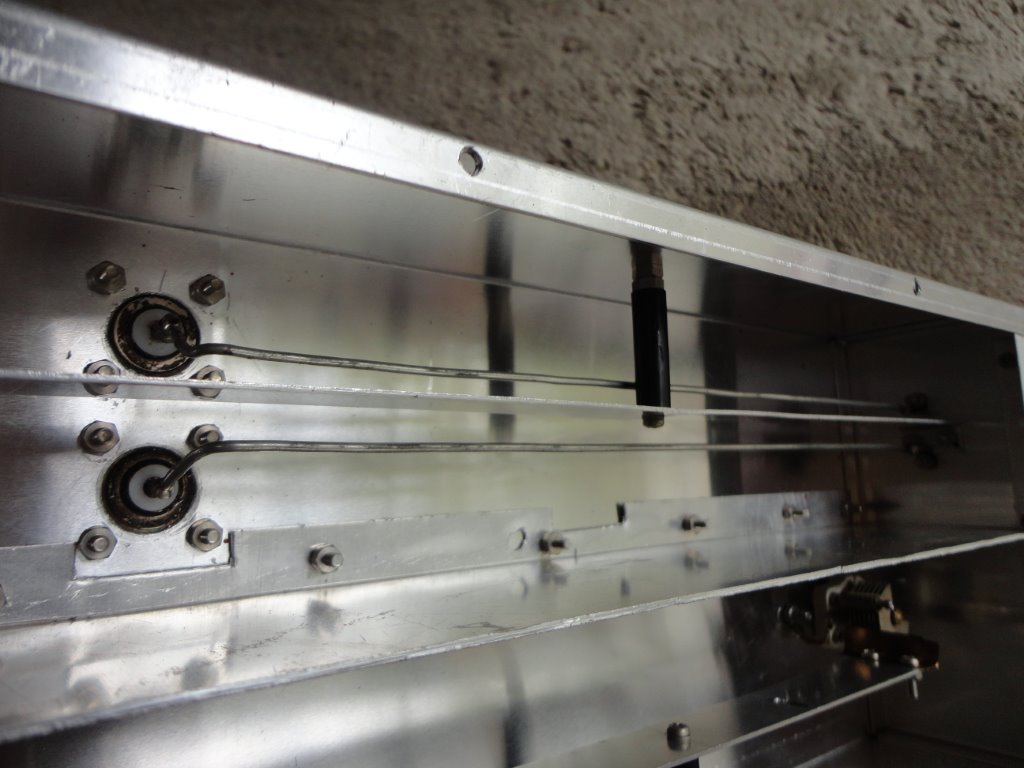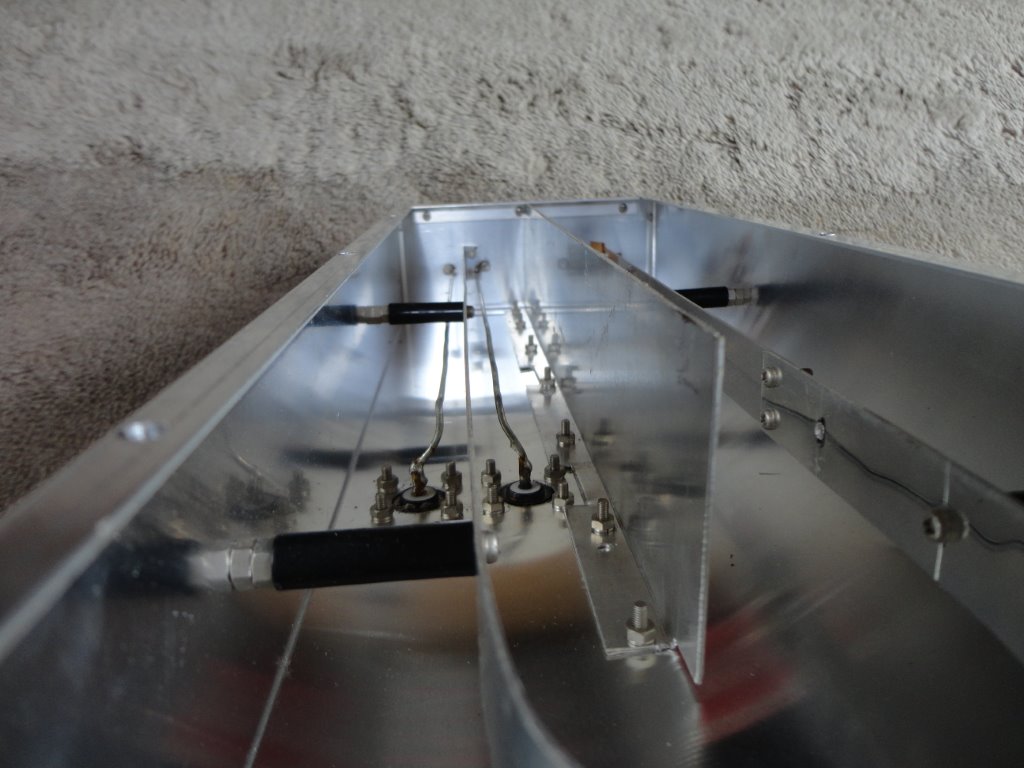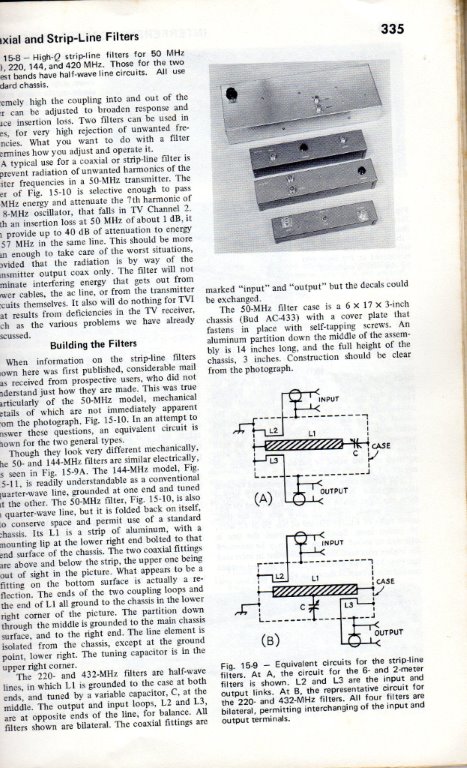この50MHz BPFは70年代のARRLのVHFマニュアルに掲載されていたものである。(このフィルタは元々逓倍方式で50MHzを作っていた時代に8MHzの7倍波の59MHzがインターフェアを引き起こし、それに対する対策として作られたらしい。実測データを見ると、確かにその周波数は大きく減衰してストップバンドになっている。)NHK総合TVがアナログ放送第2チャンネルを使っていた松本地方では50MHzの第二高調波問題が頭痛の種であったが、このフィルタは100MHzで22dBしか減衰がなく、その点ではあまり意味をなさなかった。このフィルタを2段シリースにした、いわゆるウナギの寝床なら恐らく50dB以上の効果があっただろう。学生時代に世田谷で製作したが、東京はNHK総合が1チャンネルだからTVIで困っていた訳ではなく、動機はstrip-line型
filterへの技術的興味だった。しかし都会ではFM放送など50MHz周辺の電界強度は高かったから、高利得の受信コンバータの身になって考えるとそれなりの意味は有ったのだ。50MHzの通過ロスはとても小さくてFBだったが、今回久しぶりに測ってみたら0.2dBだった!鈴蘭堂の標準アルミシャーシにちょうどピッタリのサイズがあり、それを使った記憶がある。1978年製作。
50MHz strip-line band pass filter, frequency tuning range 39MHz-85MHz,
insertion loss 0.2dB, permissible maximum power 100W
This 50MHz BPF was published in the VHF Manual of ARRL in the 70's. (Because
59MHz spectrum which is the seventh harmonics of 8MHz signal source seemed
to cause the television interference, this filter has been made as countermeasures
against it. The data shows that there is a deep dip on the frequency, and
it works certainly as a rejection filter.) The second harmonics problem
of 50MHz was really a headache of VHF gentlemen in Matsumoto area where
NHK General TV used the broadcasting channel 2. However, 100MHz attenuation
of this filter is only 22dB, so I think it was not effective as a TVI filter.
If a couple of this filter was set in series, 50dB or more might have been
effective. When I made this one, I was a university student and lived in
Tokyo. And the TVI did not bother me, because NHK General TV of Tokyo used
channel 1. You may say that the motive was just a technical interest in
strip-line type of band pass filter. However, the field strength of radio
wave around 50MHz was high in the metropolitan area. Therefore, there was
a moderate meaning in the use of this filter for the receiving converter
of high gain. By the way, the filter loss was very low. It was measured
again yesterday after a long time only to be 0.2dB on 50MHz! Making was
in 1978.
50MHz strip-line band pass filter, frequency tuning range 39MHz-85MHz,
insertion loss 0.2dB, permissible maximum power 100W







